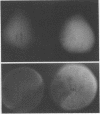Abstract
Pear fruits (Pyrus communis L. var. Bartlett) were treated with solutions containing aminoethoxyvinylglycine (AVG) using a modified vacuum infiltration method that introduced 4.3 milliliters solution per 100 grams tissue. At concentrations of 1 millimolar, AVG strongly inhibited ethylene production and delayed for 5 days the respiratory climacteric and accompanying ripening changes in skin color and flesh firmness. AVG was less effective in inhibiting the ripening of more mature fruits. Fruit infiltrated with 5 millimolar AVG had not begun to ripen 12 days after initiation of ripening in the controls. When treated with ethylene the inhibited fruit exhibited a climacteric rise in respiration, softened, and became yellow. Treatment of the AVG infiltrated fruits with ethyelne for 24 hours resulted in no recovery in endogenous ethylene production, but in a stimulation of protein synthesis measured as a 200% increase in leucine incorporation by excised tissue and a 74% increase in the percentage of ribosomes present as polysomes.
Full text
PDF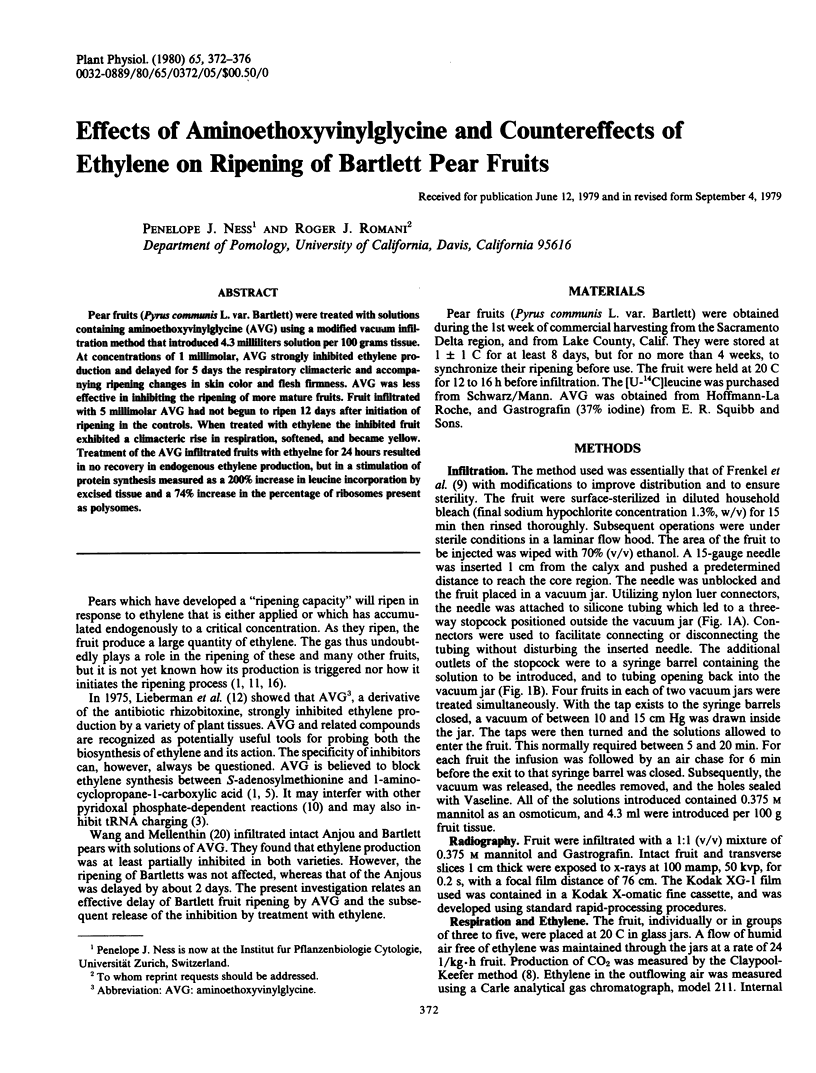
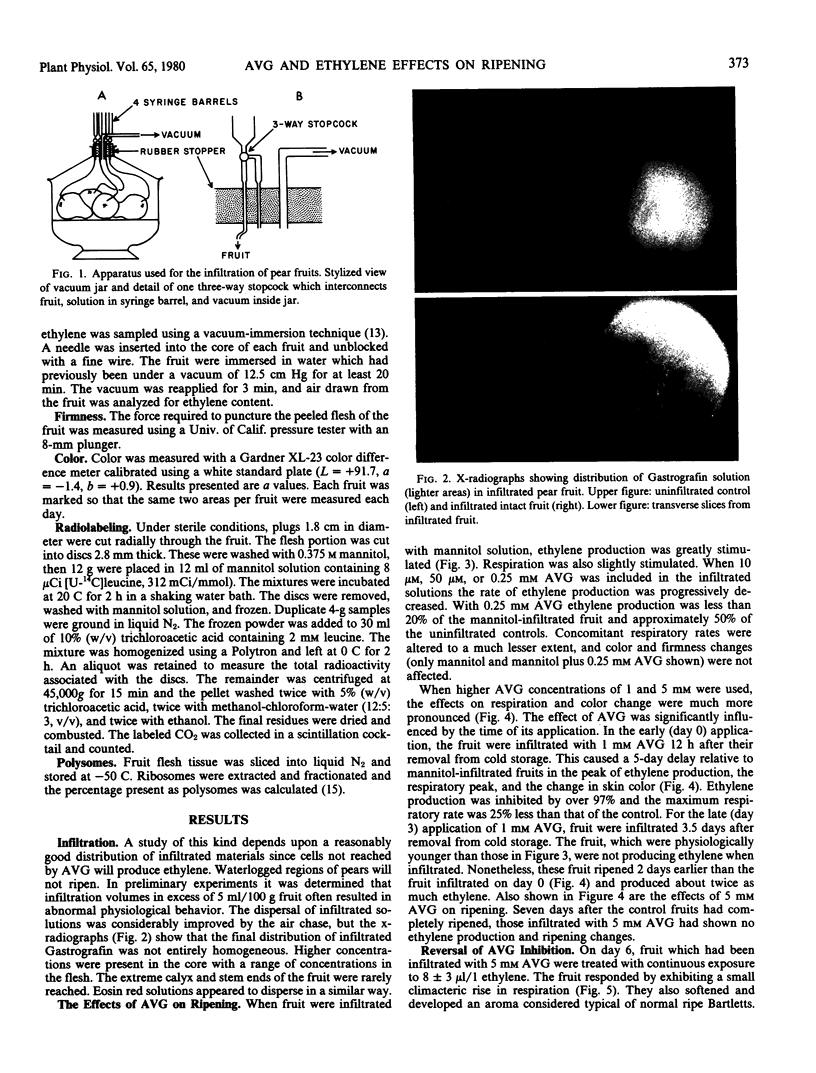
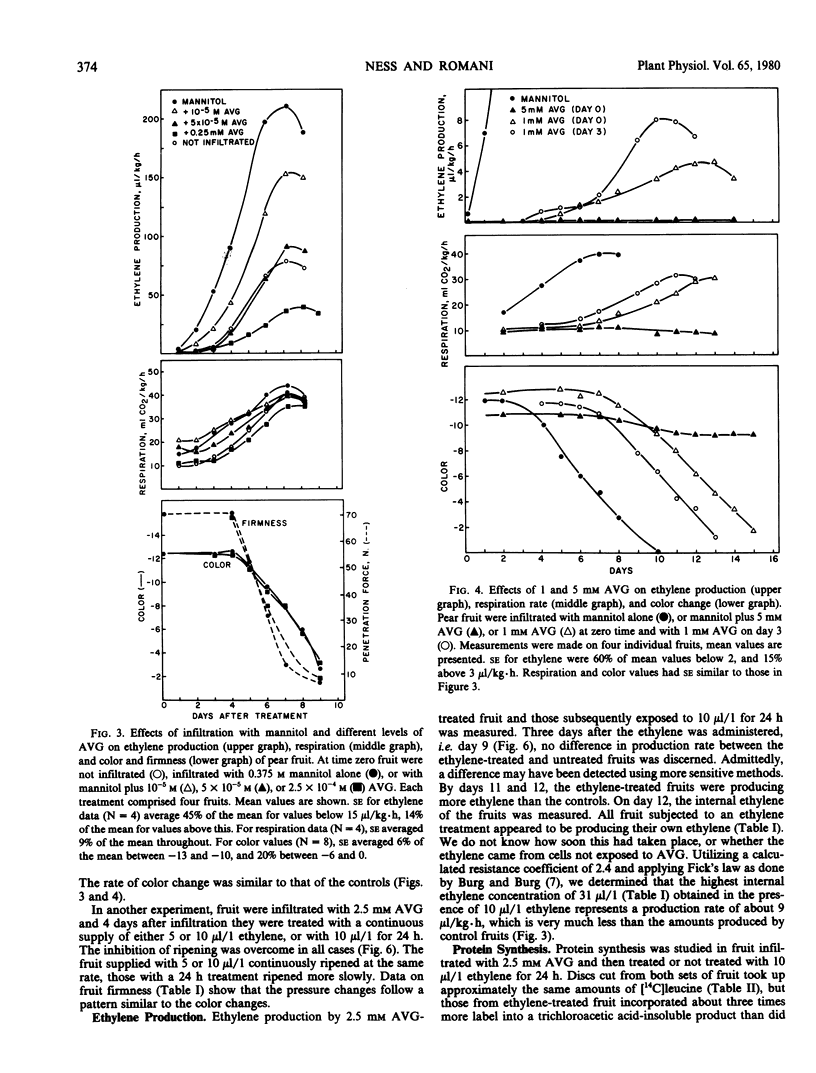
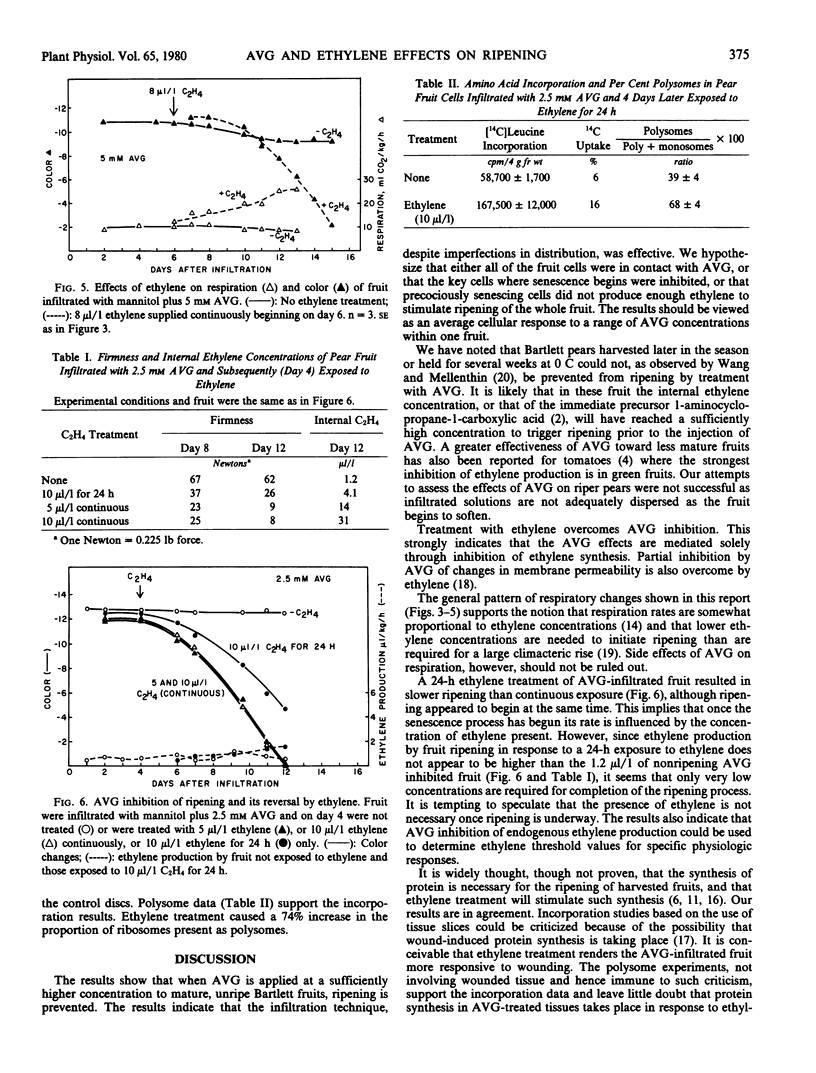

Images in this article
Selected References
These references are in PubMed. This may not be the complete list of references from this article.
- Adams D. O., Yang S. F. Ethylene biosynthesis: Identification of 1-aminocyclopropane-1-carboxylic acid as an intermediate in the conversion of methionine to ethylene. Proc Natl Acad Sci U S A. 1979 Jan;76(1):170–174. doi: 10.1073/pnas.76.1.170. [DOI] [PMC free article] [PubMed] [Google Scholar]
- Baker J. E., Lieberman M., Anderson J. D. Inhibition of ethylene production in fruit slices by a rhizobitoxine analog and free radical scavengers. Plant Physiol. 1978 Jun;61(6):886–888. doi: 10.1104/pp.61.6.886. [DOI] [PMC free article] [PubMed] [Google Scholar]
- Frenkel C., Klein I., Dilley D. R. Protein synthesis in relation to ripening of pome fruits. Plant Physiol. 1968 Jul;43(7):1146–1153. doi: 10.1104/pp.43.7.1146. [DOI] [PMC free article] [PubMed] [Google Scholar]
- Giovanelli J., Owens L. D., Mudd S. H. Mechanism of inhibition of spinach beta-cystathionase by rhizobitoxine. Biochim Biophys Acta. 1971 Mar 10;227(3):671–684. doi: 10.1016/0005-2744(71)90016-7. [DOI] [PubMed] [Google Scholar]
- Maxie E. C., Eaks I. L., Sommer N. F., Rae H. L., El-Batal S. Effect of Gamma Radiation on Rate of Ethylene and Carbon Dioxide Evolution by Lemon Fruit. Plant Physiol. 1965 May;40(3):407–409. doi: 10.1104/pp.40.3.407. [DOI] [PMC free article] [PubMed] [Google Scholar]
- Romani R., French K. Temperature-dependent Changes in the Polysomal Population of Senescent (Ripening) Pear Fruit. Plant Physiol. 1977 Dec;60(6):930–932. doi: 10.1104/pp.60.6.930. [DOI] [PMC free article] [PubMed] [Google Scholar]
- Suttle J. C., Kende H. Ethylene and senescence in petals of tradescantia. Plant Physiol. 1978 Aug;62(2):267–271. doi: 10.1104/pp.62.2.267. [DOI] [PMC free article] [PubMed] [Google Scholar]
- Wang C. Y., Mellenthin W. M. Effect of aminoethoxy analog of rhizobitoxine on ripening of pears. Plant Physiol. 1977 Apr;59(4):546–549. doi: 10.1104/pp.59.4.546. [DOI] [PMC free article] [PubMed] [Google Scholar]
- Wang C. Y., Mellenthin W. M. Internal Ethylene Levels during Ripening and Climacteric in Anjou Pears. Plant Physiol. 1972 Aug;50(2):311–312. doi: 10.1104/pp.50.2.311. [DOI] [PMC free article] [PubMed] [Google Scholar]



